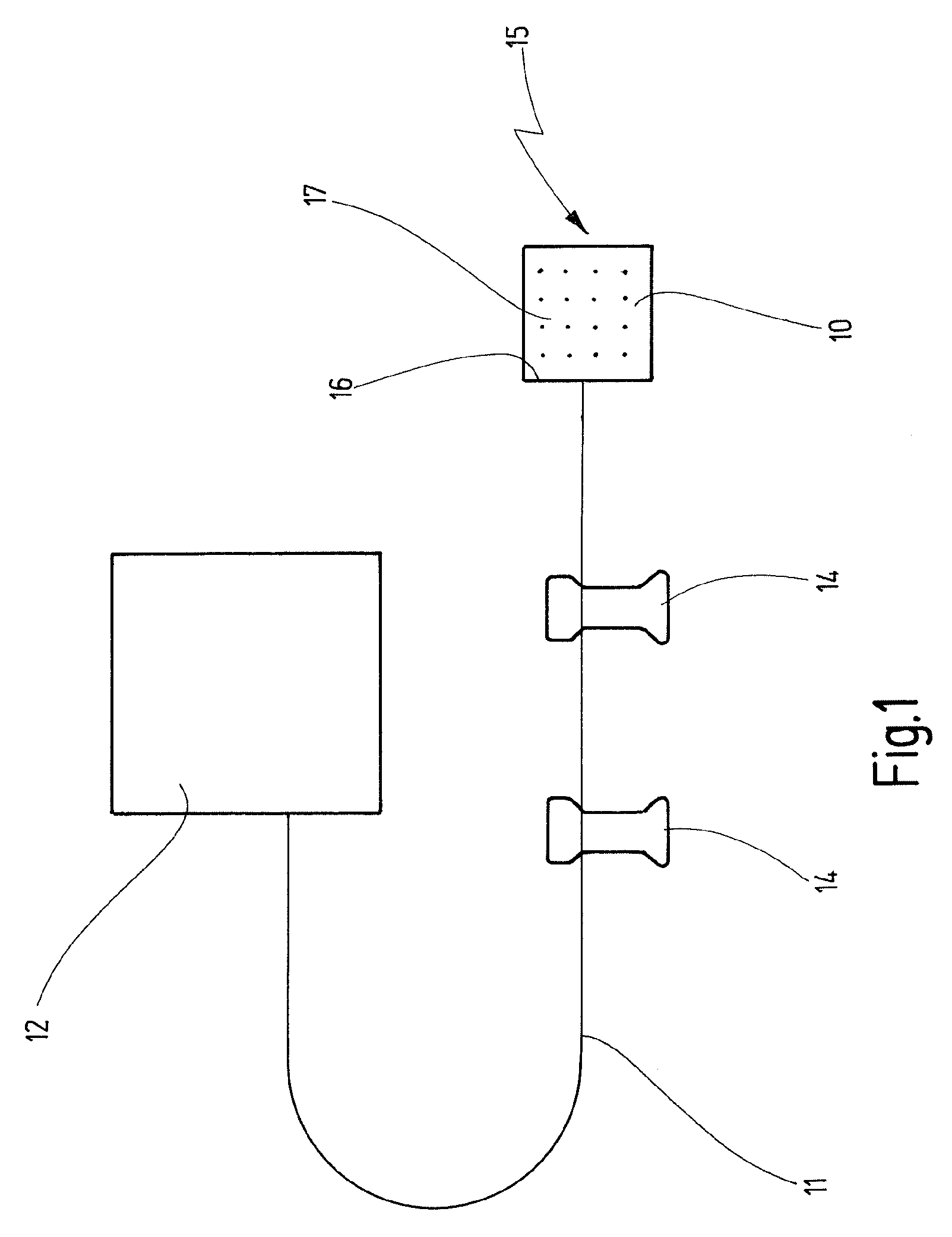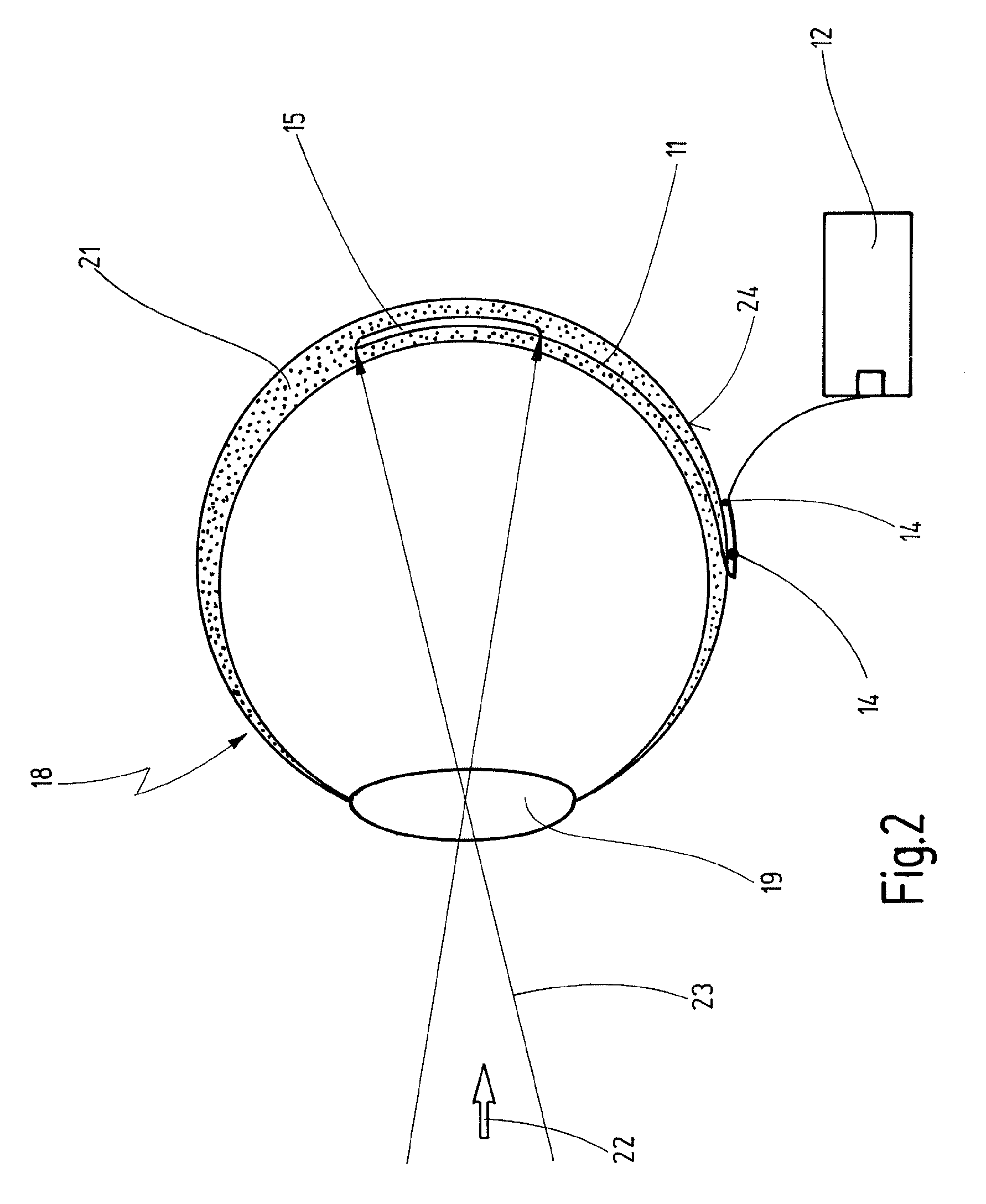Device with a base body
a technology of a base body and a body is applied in the field of devices with a base body, which can solve the problems of increasing the stimulation threshold, cytotoxic or inflammatory action, and the device mentioned at the outset is not to be understood only in the form of electrical implants
- Summary
- Abstract
- Description
- Claims
- Application Information
AI Technical Summary
Benefits of technology
Problems solved by technology
Method used
Image
Examples
Embodiment Construction
[0086]An example of the novel device is shown schematically in FIG. 1 in the form of an implantable device 10, the dimensions of which are not represented true to scale. The device 10 is connected via a cable 11 to a supply unit 12, which supplies the device 10 with electrical energy and with control signals. Securing patches 14 are provided on the cable 11 and can be used to secure the cable on the body of the person in whom the implant 10 is fitted.
[0087]The device 10 can be any desired type of implant that excites electrically excitable cells. In the case shown, it is an active retinal implant 15 which, as its base body, has a film 16 on which electrodes 17 for delivering stimulation signals to excitable cells are arranged.
[0088]The retinal implant 15 from FIG. 1 is designed to be implanted into a human eye 18, which is depicted very schematically in FIG. 2. To keep matters simple, the figure shows only the lens 19, and the retina 21 into which the implant 15 is fitted. The impla...
PUM
 Login to View More
Login to View More Abstract
Description
Claims
Application Information
 Login to View More
Login to View More - R&D
- Intellectual Property
- Life Sciences
- Materials
- Tech Scout
- Unparalleled Data Quality
- Higher Quality Content
- 60% Fewer Hallucinations
Browse by: Latest US Patents, China's latest patents, Technical Efficacy Thesaurus, Application Domain, Technology Topic, Popular Technical Reports.
© 2025 PatSnap. All rights reserved.Legal|Privacy policy|Modern Slavery Act Transparency Statement|Sitemap|About US| Contact US: help@patsnap.com



